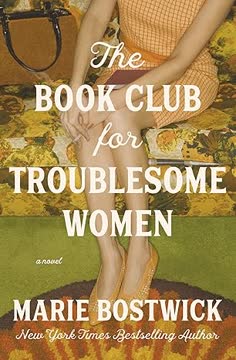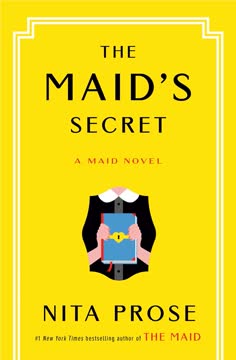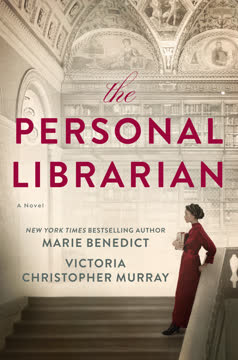Plot Summary
Tea and Tension
In 1931 London, Dorothy L. Sayers and Agatha Christie, both celebrated mystery novelists, meet for tea at Brown's Hotel. Beneath the polite chitchat, both women are haunted by personal scandals and public scrutiny—Agatha's infamous disappearance and Dorothy's own hidden shames. Sayers, brash and determined, proposes that Christie join her in the newly forming Detection Club, a society of mystery writers. But the club's male founders are wary of "too many women," prompting Sayers to hatch a plan: a secret alliance of female crime writers within the club. The stage is set for a partnership that will challenge the literary establishment and, soon, the boundaries between fiction and reality.
A Club Within A Club
Sayers and Christie, joined by fellow writers Emma Orczy, Ngaio Marsh, and Margery Allingham, form a clandestine "club within a club" to support and elevate women in the male-dominated world of detective fiction. Their first act is a murder game—a playful, locked-room mystery staged to test their collective wits and chemistry. The game reveals both their strengths and their frictions, but also forges a bond. When the Detection Club's male members try to limit female participation, the women resolve to infiltrate the club en masse, presenting themselves as an "abundance" of talent that cannot be ignored. Their alliance is christened: the Queens of Crime.
The Murder Game
The Queens gather for a parlor game at the University Women's Club, with Sayers playing the "victim." The women must solve a locked-room mystery, each displaying her unique approach to deduction. The game is both icebreaker and audition, revealing competitive edges and underlying tensions—especially between the aristocratic Emma and the modern, sharp-tongued Ngaio. Yet, as they collaborate, they discover the power of their combined intellects. The game's success cements their resolve to work together, not just in fiction, but in the real world.
Queens Assembled
At the Detection Club's initiation ceremony, the Queens appear together, forcing the club's hand. The men, caught off guard, must accept the women as equals. Yet, the victory is bittersweet: the male members' condescension and whispers persist. When Agatha is slighted by the club's president, G.K. Chesterton, she asserts, "There are no ladies-in-waiting here, Gilbert. There are only queens. And you are not our king." The women, frustrated but undeterred, resolve to prove their worth not just as writers, but as real-life detectives.
Locked Room, Locked Hearts
Sayers proposes that the Queens solve an actual crime: the mysterious disappearance and death of May Daniels, a young English nurse who vanished in Boulogne, France. The case is a locked-room puzzle worthy of their talents—May entered a train station washroom and was never seen alive again. The authorities are stymied, and the press is quick to blame the victim. The Queens, each with her own reasons for seeking justice, agree to investigate, seeing in May's plight a reflection of their own struggles for recognition and respect.
The Disappearance of May Daniels
The Queens travel separately to Boulogne, retracing May's last day. Sayers, accompanied by her journalist husband Mac, navigates the world of male reporters, who spin lurid theories about drugs and scandal. The women, posing as tourists, interview shopkeepers and locals, piecing together May's movements. They discover that May was last seen buying a hat, suffering from nausea, and possibly hiding from someone. The official investigation is cursory, and the press coverage is cruel. The Queens resolve to see May not as a headline, but as a person.
Following May's Footsteps
The Queens decide to approach the case as they would a novel: by building a biography of May Daniels. They visit every location May did—hotel, millinery, chemist, park, and the fateful train station. They learn that May was secretive, possibly pregnant, and had a mysterious benefactor who bought her expensive dresses. The locked-room puzzle of the washroom is solved by Sayers, who demonstrates how May could have disguised herself and slipped past her friend. But the question remains: why did May vanish, and who wanted her dead?
Red Herrings and Rumors
As the Queens dig deeper, they confront a barrage of red herrings: a syringe found near May's body, rumors of drug deals, and a confession letter dismissed as a hoax. The authorities are eager to close the case, blaming May for her own death. The Queens, drawing on their experience as writers, see through the misdirection. They suspect that May's death is not a random act, but a carefully orchestrated crime, and that the real motive is being deliberately obscured.
The Nurse's Secret Life
Back in London, the Queens interview May's sisters and her friend Celia. They discover that May had a secret affair with a wealthy, married man—Louis Williams, son of an insurance magnate. May's expensive dresses and theater tickets are traced to him. A hidden letter reveals that May was pregnant and had been pressured to have an abortion. Another missing girl, Leonora Denning, is linked to the same circle of men. The Queens realize that May's death is part of a pattern of exploitation and silencing of vulnerable women.
The Circle of Suspects
The Queens identify three suspects: Louis Williams, his ruthless father Jimmy, and Sir Alfred Chapman, a powerful theater impresario. Each has motive, means, and a history of abusing power. The Queens, using their skills as writers and performers, orchestrate a confrontation—mirroring the classic "gathering of suspects" scene from their novels. They use blackmail, subterfuge, and psychological pressure to force the men to reveal their secrets.
The Letter in Left Luggage
The breakthrough comes when the Queens recover a letter May hid in a train station locker. In it, May details her assault, pregnancy, and fear for her life. She names her "beau" and describes being approached by a stranger in Boulogne, sent to arrange an abortion—or worse. The letter is both confession and accusation, but the authorities are reluctant to act. The Queens realize they must take justice into their own hands.
The Trap Is Set
The Queens lure Louis Williams into a compromising situation, using Margery as bait and a Pinkerton detective for protection. Under pressure, Louis confesses to his affair with May but denies being the father or the killer. He implicates Sir Alfred Chapman, who, in a final confrontation at Mathers Insurance, reveals his own guilt and involvement in both May's and Leonora's deaths. A struggle ensues, and Sir Alfred is killed in a fall—poetic justice for his crimes.
Truths and Confessions
With Sir Alfred dead, the Queens force Jimmy Williams to confess his role in covering up the crime and arranging May's murder. They strike a devil's bargain: in exchange for his confession, they will protect Louis from public disgrace. The authorities accept the story of Sir Alfred's accidental death and Jimmy's guilt. The Queens have delivered justice, but not without moral compromise and personal risk.
Justice, Bargained and Won
The Queens reflect on the cost of their victory. Sayers, threatened with exposure of her own illegitimate child, finds solace in the solidarity of her friends. The women have changed—not just as detectives, but as people. They have confronted the darkness at the heart of their society and their own lives. The Detection Club, once hostile, now celebrates their achievement. The Queens of Crime have proven themselves, not just as writers, but as champions of justice.
Queens of Crime Triumphant
At a festive Detection Club gathering, the Queens are toasted for their real-life sleuthing. The club, once a bastion of male privilege, is now a place where women's voices are heard and valued. The Queens, each transformed by the experience, look to the future with hope and resolve. They have rewritten the rules—not just of detective fiction, but of their own lives.
Characters
Dorothy L. Sayers
Sayers is the driving force behind the Queens of Crime. Outwardly confident and witty, she is haunted by personal secrets—most notably, her illegitimate son, whom she keeps hidden from the world. Her psychological complexity is central: she craves recognition and respect, yet fears exposure and judgment. Sayers's leadership is both inspiring and flawed; her impulsiveness sometimes endangers the group, but her empathy and intellect are the glue that binds the Queens. Through the investigation, she confronts her own shame and learns to trust in the solidarity of women.
Agatha Christie
Christie, the most famous of the Queens, is recovering from the trauma of her public disappearance and divorce. She is initially reticent, hiding behind a mask of propriety and self-effacement. Yet, beneath the surface, she is shrewd, resilient, and deeply committed to justice. Christie's approach to mystery is methodical and puzzle-driven, but the real case forces her to engage emotionally. Her friendship with Sayers is transformative, helping her reclaim her voice and agency.
Emma Orczy
The Hungarian-born creator of the Scarlet Pimpernel, Emma is the matriarch of the group. She is proud, status-conscious, and sometimes out of touch, but also fiercely loyal and surprisingly open to change. Her old-world manners clash with Ngaio's modernity, but their rivalry evolves into mutual respect. Emma's journey is one of humility and growth, as she learns to value solidarity over social standing.
Ngaio Marsh
The New Zealand-born Marsh is the group's iconoclast—tall, androgynous, and unafraid to challenge convention. She is quick-witted, sometimes abrasive, and deeply committed to women's independence. Her rivalry with Emma is both comic and revealing, exposing generational and cultural divides. Ngaio's psychological arc is about learning to temper her cynicism with empathy and to trust in collective action.
Margery Allingham
The youngest Queen, Margery is cheerful, stylish, and sometimes insecure. She masks her anxieties with humor and enthusiasm, but proves herself a shrewd and courageous investigator. Margery's journey is one of self-assertion—she moves from the periphery to the center, using her charm and intelligence to play a pivotal role in the group's success.
May Daniels
May is the murdered nurse at the heart of the mystery. Through the Queens' investigation, she emerges as a fully realized character: ambitious, vulnerable, and caught in the crosshairs of male power. Her secret affair, pregnancy, and desperate letter reveal the dangers faced by "surplus" women in a patriarchal society. May's fate is both a personal tragedy and a commentary on systemic injustice.
Louis Williams
The son of a self-made insurance magnate, Louis is May's secret lover. Handsome and privileged, he is accustomed to getting what he wants, but lacks the courage to face consequences. His affair with May is exploitative, and his attempts to cover it up are cowardly. Yet, under pressure, he reveals a capacity for remorse and a willingness to confront his own failings.
Jimmy Williams
Louis's father, Jimmy, is a self-made man who will do anything to protect his family's reputation. He orchestrates the cover-up of May's death and is willing to sacrifice others to save his son. Yet, his love for Louis is genuine, and in the end, it is this love that leads him to confess. Jimmy embodies the corrupting influence of power and the limits of paternal authority.
Sir Alfred Chapman
A theater impresario and pillar of society, Sir Alfred is the true villain of the story. Beneath his mild-mannered exterior lies a history of exploitation, sexual violence, and murder. He manipulates women, orchestrates cover-ups, and uses his influence to evade justice. His downfall is both shocking and inevitable—a reckoning for decades of impunity.
Millicent Bennett
Sir Alfred's former lover and a clerk at Mathers Insurance, Millicent is drawn into the conspiracy against May. Initially an instrument of male power, she ultimately turns against Sir Alfred, exposing his crimes and delivering poetic justice. Her arc is one of awakening and agency, mirroring the larger theme of women reclaiming their voices.
Plot Devices
The Club Within a Club
The formation of the Queens of Crime—a clandestine group within the male-dominated Detection Club—serves as both a plot device and a metaphor. It allows the story to explore themes of solidarity, exclusion, and subversion. The club's rituals, games, and gatherings provide a structure for the narrative, while the women's alliance becomes the means by which they challenge both literary and societal norms.
The Locked-Room Mystery
The locked-room scenario—May's disappearance from a train station washroom—anchors the plot and pays homage to Golden Age detective fiction. The device is used both literally (in the murder game and May's case) and metaphorically (the secrets each character keeps). The solution, involving disguise and misdirection, is both a feat of deduction and a commentary on the invisibility of women.
Red Herrings and Misdirection
The story is rife with red herrings: the syringe, the confession letter, rumors of drugs and scandal. These devices serve to critique the failures of the press and police, who are eager to blame the victim and close the case. The Queens, as writers, are uniquely equipped to see through the misdirection, using their narrative skills to uncover the truth.
The Gathering of Suspects
The climactic scene, in which the Queens assemble the circle of suspects and force confessions, mirrors the conventions of detective fiction. It is both a performance and a reckoning, using psychological pressure, evidence, and moral argument to bring the truth to light. The device allows for the unmasking of the villain and the restoration of order—but not without ambiguity and compromise.
The Letter in Left Luggage
May's hidden letter, discovered in a train station locker, is the narrative linchpin. It provides both a solution to the mystery and a voice for the silenced victim. The device is a powerful commentary on the importance of testimony, memory, and the written word in the pursuit of justice.
Analysis
Marie Benedict uses the conventions of Golden Age mystery to expose the ways in which women's voices are silenced, their ambitions thwarted, and their suffering dismissed. The novel is as much about the formation of female solidarity as it is about solving a murder; the real locked room is the world of male power, and the real mystery is how to break free. By blending real historical figures with a fictional case, Benedict explores the psychological costs of secrecy, shame, and complicity, while celebrating the courage it takes to speak—and act—together. The book's ultimate lesson is that justice is not given, but made: by women, for women, and in defiance of the rules.
Last updated:
FAQ
Synopsis & Basic Details
What is The Queens of Crime about?
- Uniting Female Literary Power: The Queens of Crime by Marie Benedict follows Dorothy L. Sayers as she endeavors to establish the Detection Club, a prestigious society for mystery writers in 1931 London. Faced with the male founders' reluctance to include more women, Sayers, alongside Agatha Christie, forms a clandestine "club within a club" with fellow authors Emma Orczy, Ngaio Marsh, and Margery Allingham.
- Real-Life Detective Challenge: This alliance, christened the Queens of Crime, decides to prove their intellectual prowess and collective strength by tackling a real-life, unsolved murder: the mysterious disappearance and death of May Daniels, a young nurse in Boulogne, France. The case, initially dismissed by authorities and sensationalized by the press, becomes a "locked-room mystery" that mirrors the intricate plots of their own novels.
- Justice Beyond Fiction: As the Queens delve into May's hidden life, they uncover a web of deceit, exploitation, and patriarchal power that extends far beyond the victim. Their investigation forces them to confront societal injustices, personal secrets, and the blurred lines between their fictional worlds and the harsh realities faced by women in their era, ultimately seeking justice for May and validating their own worth.
Why should I read The Queens of Crime?
- Empowering Female Solidarity: Readers should delve into The Queens of Crime for its inspiring portrayal of brilliant women uniting against a patriarchal literary establishment and societal norms. The novel celebrates female intellect, collaboration, and resilience, offering a powerful message about collective action.
- Intriguing Historical Mystery: Beyond the feminist themes, the book offers a captivating historical mystery, blending real-life figures with a fictionalized, unsolved case. It provides a unique "behind-the-scenes" look at the Golden Age of Detective Fiction, inviting readers to solve a complex puzzle alongside literary legends.
- Deep Emotional Resonance: The story delves into the personal struggles and hidden vulnerabilities of its protagonists, particularly Dorothy L. Sayers and Agatha Christie, making their quest for justice deeply personal. It explores themes of shame, reputation, and the fight for a voice, resonating with contemporary issues of gender and power.
What is the background of The Queens of Crime?
- Golden Age of Detective Fiction: The novel is set in 1931, during the "Golden Age" of British detective fiction, a period characterized by intricate plots, fair-play rules, and iconic sleuths. Marie Benedict immerses readers in the literary world of the Detection Club, a real organization founded by prominent mystery writers to uphold the genre's standards.
- Post-WWI Societal Shifts: The story subtly reflects the profound social and cultural changes in post-World War I Britain. The concept of "surplus women" (Chapter 11), the limited opportunities for educated women, and the pervasive double standards regarding female reputation and sexuality are central to May Daniels's tragic story and the Queens' motivations.
- Author's Fictionalized History: Marie Benedict draws inspiration from real historical figures like Dorothy L. Sayers and Agatha Christie, known for their groundbreaking contributions to the genre. While the Detection Club and its members are real, the specific "club within a club" and the detailed investigation into May Daniels's murder are fictionalized elements, allowing the author to explore deeper truths about women's lives and historical injustices (Author's Note).
What are the most memorable quotes in The Queens of Crime?
- "None of us is as we appear.": This opening line (Chapter 1) by Dorothy L. Sayers immediately establishes a core theme of hidden identities and deceptive appearances, not just for criminals but for the Queens themselves, foreshadowing their disguises and concealed personal lives. It encapsulates the novel's exploration of facades and authentic selves.
- "There are no ladies-in-waiting here, Gilbert. There are only queens. And you are not our king.": Agatha Christie's defiant declaration (Chapter 6) to G.K. Chesterton powerfully asserts the women's equality and rejection of patriarchal hierarchy within the Detection Club. This quote is a pivotal moment of female empowerment and solidarity, defining the Queens' collective identity and mission.
- "We women aren't what you call us—witches or crones or madwomen or surplus or nobodies. We are all Queens.": Dorothy L. Sayers's final whisper to Jimmy Williams (Chapter 56) encapsulates the novel's ultimate message of female strength, resilience, and self-definition. It reclaims derogatory labels and transforms them into a powerful statement of collective identity and worth, solidifying the legacy of the Queens of Crime.
What writing style, narrative choices, and literary techniques does Marie Benedict use?
- First-Person Perspective (Dorothy L. Sayers): The novel is primarily narrated from Dorothy L. Sayers's point of view, offering intimate access to her thoughts, insecurities, and brilliant deductions. This choice allows readers to experience the mystery and the emotional journey through the eyes of a complex, relatable protagonist, enhancing the psychological depth of The Queens of Crime analysis.
- Interweaving Fact and Fiction: Benedict masterfully blends historical fact (the real authors, the Detection Club, societal context) with fictionalized elements (the specific murder case, the "club within a club", personal secrets). This technique creates a rich, immersive world that feels authentic while allowing for thematic exploration beyond documented history, a hallmark of Benedict's historical fiction literary techniques.
- Genre Subversion and Homage: The narrative both pays homage to and subverts the conventions of Golden Age detective fiction. It features classic plot devices like the "locked-room mystery" and the "gathering of suspects" but recontextualizes them through a feminist lens, using them to critique societal injustices and highlight the unique strengths of female sleuths. This approach offers a fresh analysis of detective novel conventions.
Hidden Details & Subtle Connections
What are some minor details that add significant meaning?
- May's Seasickness and Nausea: Initially dismissed as mere seasickness (Chapter 12), May's persistent "mal à l'estomac" and her search for anti-nausea medication (Chapter 18) subtly foreshadow her pregnancy. This seemingly minor detail, overlooked by the police, becomes a crucial clue for the Queens, highlighting how women's physical experiences are often dismissed or misinterpreted by male-dominated systems.
- The Millinery Salesgirl's Weariness: The young salesgirl at the Boulogne millinery (Chapter 13), described with "weary eyes, with dark circles underneath," is a subtle echo of May's own vulnerability and the pressures faced by young working women. Her comment about the milliner's fear that "murder is bad for business" underscores the economic anxieties that often overshadow justice, connecting to the broader themes in The Queens of Crime about societal priorities.
- Miss Bennett's Theater Reading Material: The Mathers Insurance receptionist, Miss Bennett, is consistently seen reading theater publications like The Stage and The Era (Chapter 54). This seemingly innocuous detail subtly foreshadows her past as a performer in Sir Alfred Chapman's West End shows and her deep, complicated connection to him, revealing her as a key, overlooked figure in the conspiracy and a victim of Sir Alfred's exploitation.
What are some subtle foreshadowing and callbacks?
- Dorothy's "Softie" Label: Mac affectionately calls Dorothy a "softie" (Chapter 24) when she expresses empathy for May Daniels, a label she internally refutes. This is a subtle callback to her hidden maternal instincts and her secret son, John, foreshadowing the profound emotional connection she will feel to May's plight and her unborn child, revealing a deeper layer to Dorothy L. Sayers's motivations.
- Agatha's "Miss Marple" Moment: When Agatha orchestrates the "accidental" collision with Celia McCarthy in Birmingham, Dorothy observes that "she resembles one of her new characters, an unassuming but secretly crafty detective named Miss Marple" (Chapter 22). This foreshadows Agatha's growing confidence and willingness to employ subtle, often underestimated, female cunning in their real-life investigation, a key aspect of Agatha Christie's character development.
- The "Bastard" Motif: The word "bastard" is used twice in significant contexts: first by Jim Watts describing Jimmy Williams's low birth (Chapter 29), and later by Ngaio in outrage at May's beau (Chapter 44). This recurring word subtly echoes Dorothy's deepest shame regarding her own illegitimate son, John, and foreshadows the threat she receives, linking her personal vulnerability to the societal judgment faced by May and other "surplus women" in The Queens of Crime analysis.
What are some unexpected character connections?
- Louis Williams and Leonora Denning: The discovery that Louis Williams was questioned in the disappearance of Leonora Denning, the missing violinist (Chapter 22), creates an unexpected and chilling parallel to May Daniels's case. This connection suggests a pattern of predatory behavior, elevating Louis from a mere philanderer to a potential serial exploiter of vulnerable young women, deepening the Louis Williams character analysis.
- Jimmy Williams and Sir Alfred Chapman's Criminal Ties: Mac's revelation that Jimmy Williams has a history of "shady dealings—gambling, horses, you name it" and that Sir Alfred Chapman was a "kingpin of the Great War black market" (Chapter 52) reveals a deep, unexpected criminal connection between the two seemingly respectable men. This hidden network of corruption explains their willingness to cover up May's murder and highlights the pervasive moral decay beneath society's surface.
- Millicent Bennett's Dual Role: Miss Bennett, the Mathers Insurance receptionist, is unexpectedly revealed to be Sir Alfred Chapman's former lover and an unwitting accomplice in his surveillance of Louis and May (Chapter 54). Her past as a chorus girl and her current subservient role expose the systemic exploitation of women in both the theater and corporate worlds, making her a complex, sympathetic figure whose eventual defiance is a powerful character turning point.
Who are the most significant supporting characters?
- Celia McCarthy: May Daniels's friend and fellow nurse, Celia is a crucial witness whose initial reluctance to testify highlights the fear and vulnerability of women caught in such scandals. Her eventual trust in the Queens, particularly Agatha, provides vital information about May's secret life and her relationship with Louis Williams, making her instrumental to May Daniels's story explained.
- Madame Brat (Hôtel Morveaux Proprietress): This seemingly minor character provides critical, overlooked details about May's last day, including her seasickness and her specific tea order (Chapter 12). Her keen observation skills and willingness to share information with the Queens, despite police disinterest, underscore the importance of everyday female witnesses whose insights are often devalued by official investigations.
- Mr. Marks (British Expatriate): The "town snoop" (Chapter 25) in Boulogne, Mr. Marks, provides the Queens with the vital information that May was seen crying and writing furiously in the park shortly before her disappearance. His detailed observation, though initially dismissed by authorities, confirms May's emotional distress and the existence of her hidden letter, proving crucial to unraveling The Queens of Crime plot.
Psychological, Emotional, & Relational Analysis
What are some unspoken motivations of the characters?
- Dorothy's Quest for Legitimacy: Beyond justice for May, Dorothy is driven by an unspoken desire to legitimize her own unconventional life and hidden motherhood. Her fierce protectiveness of May's reputation and unborn child (Chapter 47) is a projection of her own anxieties about John, revealing a deep, personal Dorothy L. Sayers motivation to prove that women, and their choices, deserve respect.
- Agatha's Reclaiming of Agency: Agatha's initial reticence and later, her surprising boldness in confronting Celia and Louis, stem from an unspoken need to reclaim her narrative and agency after her own public disappearance and the subsequent media frenzy. Her empathy for May's public shaming (Chapter 15) is deeply personal, motivating her to ensure May's story is told truthfully, a key aspect of Agatha Christie's psychological journey.
- Jimmy Williams's Fear of Social Regression: Jimmy Williams's ruthless actions to cover up May's murder are driven by an unspoken, almost primal, fear of losing the hard-won social standing he achieved from his humble beginnings. His desire to protect Louis's "respectable" life (Chapter 53) is a desperate attempt to secure his family's place in the upper echelons, revealing the deep-seated class anxieties that fuel his Jimmy Williams motivations.
What psychological complexities do the characters exhibit?
- Dorothy's Impulsivity vs. Self-Preservation: Dorothy L. Sayers exhibits a complex interplay between her inherent impulsivity, which often leads her to take risks (e.g., visiting Louis Williams alone, Chapter 31), and a deep-seated need for self-preservation, particularly concerning her son, John. This internal conflict creates tension, as her desire for justice for May clashes with the very real threats to her own carefully constructed life, highlighting the psychological complexities of Dorothy L. Sayers.
- Agatha's Mask of Inscrutability: Agatha Christie, scarred by public scrutiny, often presents an "inscrutable blankness" (Chapter 1) or a "frumpiness" (Chapter 25) that belies her sharp intellect and fierce determination. This mask is a psychological defense mechanism, allowing her to observe and deduce without drawing attention, but it also hints at the emotional toll of her past, making her a master of subtle manipulation and Agatha Christie's emotional analysis.
- Millicent Bennett's Complicity and Awakening: Millicent Bennett's journey from complicit employee to vengeful agent is a profound psychological arc. Her initial willingness to serve Sir Alfred, despite his mistreatment, speaks to the power dynamics and limited choices for women. Her eventual "awakening" (Chapter 55) is a powerful moment of self-realization, as she recognizes her own exploitation and reclaims her agency, offering a deep Millicent Bennett character study.
What are the major emotional turning points?
- Agatha's Defiance at the Detection Club: Agatha's declaration, "There are no ladies-in-waiting here, Gilbert. There are only queens. And you are not our king" (Chapter 6), marks a significant emotional turning point for her. It's a public assertion of her worth and a rejection of the condescension she's endured, signaling her readiness to shed her reclusive persona and fight for collective female empowerment.
- Dorothy's Epiphany at Napoleon's Column: Standing over the thicket where May's body was found, Dorothy has an emotional epiphany: "May becomes very real. She's no longer just a news headline... She was a hardworking young nurse... A person upon whom harm was inflicted. A girl, discarded and forgotten" (Chapter 9). This moment transforms the investigation from an intellectual exercise into a deeply personal quest for justice, solidifying Dorothy L. Sayers's emotional commitment.
- Dorothy's Confession to Agatha: The most profound emotional turning point for Dorothy is her confession to Agatha about her son, John, after receiving the threatening note (Chapter 47). Agatha's "unequivocal acceptance" and lack of judgment allows Dorothy to shed years of shame and embrace the full scope of her identity, forging an unbreakable bond of trust and vulnerability between the two women.
How do relationship dynamics evolve?
- Dorothy and Mac's Shifting Partnership: Dorothy and Mac's relationship evolves from a supportive, adventurous partnership (Chapter 8) to one strained by Mac's journalistic pursuit of sensational headlines about May (Chapter 14, 24). While Mac generally champions Dorothy's career, his professional priorities sometimes clash with her moral compass, highlighting the inherent tension between personal loyalty and public truth in The Queens of Crime relationship dynamics.
- Ngaio and Emma's Rivalry to Respect: The initial relationship between Ngaio and Emma is marked by competitive barbs and generational clashes (Chapter 3, 4). Ngaio's modern bluntness often irritates Emma's aristocratic sensibilities. However, through their shared mission and mutual admiration for each other's unique strengths, their dynamic evolves into a deep, if still playfully contentious, respect and friendship (Chapter 39, 57), showcasing the power of female solidarity in fiction.
- The Queens' Collective Trust and Vulnerability: The Queens' relationships deepen from a strategic alliance to a profound bond of trust and mutual support. Initially, Dorothy's impulsiveness and secrecy create friction (Chapter 33). However, the shared dangers, emotional revelations (like Dorothy's secret son), and collective pursuit of justice forge an unbreakable sisterhood, demonstrating how shared purpose can lead to deep personal connection and women's empowerment themes.
Interpretation & Debate
Which parts of the story remain ambiguous or open-ended?
- The Full Extent of Jimmy Williams's Complicity: While Jimmy Williams confesses to facilitating May's murder by hiring Charlie Fletcher at Sir Alfred's behest (Chapter 56), the exact depth of his knowledge and moral culpability in the initial rape and subsequent cover-up remains somewhat ambiguous. Readers might debate whether his actions were solely driven by a desire to protect Louis or if he harbored a more sinister understanding of Sir Alfred's depravity, leaving room for interpretation of Jimmy Williams's guilt.
- Millicent Bennett's Future: After pushing Sir Alfred to his death, Millicent Bennett is protected by the Queens and escapes legal repercussions (Chapter 56). However, her future remains open-ended. Will she truly be free from Sir Alfred's influence and the trauma of her complicity? Her "unholy halo" (Chapter 55) suggests a complex, perhaps dark, transformation, leaving readers to ponder the long-term psychological impact of her actions and her path to redemption or further moral compromise.
- The Long-Term Impact on Louis Williams: Louis Williams is spared public disgrace and legal consequences for his affair and complicity in May's initial exploitation, thanks to his father's sacrifice (Chapter 56). The story leaves open whether this experience truly transforms him. While he shows moments of remorse, it's debatable if he will genuinely atone for his past actions or if his privilege will allow him to revert to his entitled ways, prompting debate on Louis Williams's character arc.
What are some debatable, controversial scenes or moments in The Queens of Crime?
- The "Devil's Bargain" for Justice: The Queens' decision to strike a "devil's bargain" (Chapter 56) with Jimmy Williams—allowing him to confess to a lesser role in May's murder while protecting Louis from public exposure—is highly debatable. This compromise, trading full justice for a partial confession and the preservation of Louis's reputation, raises questions about the ethics of their methods and whether the ends truly justify the means, sparking controversy in The Queens of Crime ending.
- Millicent Bennett's Role in Sir Alfred's Death: Millicent Bennett's act of pushing Sir Alfred Chapman to his death (Chapter 55) is a controversial moment. While it can be interpreted as a powerful act of vengeance and justice for May and other exploited women, it is also an act of violence that falls outside legal bounds. Readers might debate whether her actions were justified given Sir Alfred's depravity, or if it undermines the Queens' moral authority, leading to discussion on Millicent Bennett's actions.
- Dorothy's Use of John's Secret: Dorothy's internal struggle and eventual decision to risk the exposure of her illegitimate son, John, by continuing the investigation (Chapter 47) is a deeply controversial personal choice. While framed as a sacrifice for justice, it forces readers to consider the immense personal cost of her activism and whether it was fair to potentially jeopardize John's future, inviting debate on Dorothy L. Sayers's choices.
The Queens of Crime Ending Explained: How It Ends & What It Means
- Sir Alfred's Demise and Jimmy's Confession: The climax of The Queens of Crime ending explained sees Sir Alfred Chapman, the true rapist and murderer of May Daniels, pushed to his death by Millicent Bennett, his former lover and unwitting accomplice (Chapter 55). To secure a confession and protect Louis Williams from public ruin, the Queens strike a "devil's bargain" with Jimmy Williams. Jimmy agrees to confess to facilitating May's murder by hiring Charlie Fletcher at Sir Alfred's command, while the Queens remain silent about Louis's affair with May and the circumstances of Sir Alfred's "accidental" fall (Chapter 56).
- Justice, Imperfectly Served: The ending signifies
Review Summary
The Queens of Crime receives mostly positive reviews, with readers praising its engaging mystery, strong female characters, and historical setting. Many appreciate the portrayal of pioneering women crime writers and their struggle for recognition. Some find the character development lacking and pacing slow at times. The novel's blend of fiction and real-life figures intrigues most readers, though a few feel uncomfortable with fictional liberties taken. Overall, it's recommended for fans of historical fiction and classic mysteries.
The Scarlet Pimpernel (publication order) Series Series
Similar Books
Download PDF
Download EPUB
.epub digital book format is ideal for reading ebooks on phones, tablets, and e-readers.


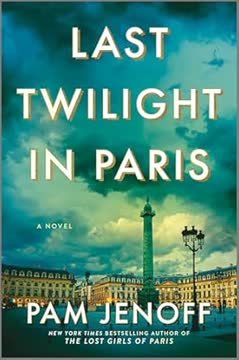

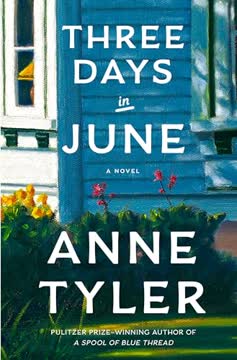


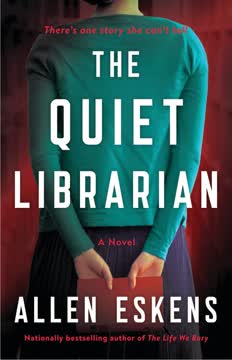

![Vera Wong's Guide to Snooping [On a Dead Man] Summary](https://files.sobrief.com/social/cover_vera-wongs-guide-to-snooping-on-a-dead-man_360px_1747304022.jpg)
